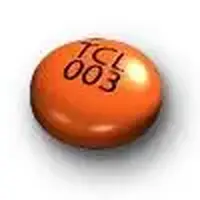Generic name: correctol
Availability: Over the counter
Pregnancy & Lactation: Risk data available
Brand names: Dulcolax laxative, Bisacodyl (oral and rectal)
What is Bisacodyl (monograph)?
Introduction
Bisacodyl, a diphenylmethane laxative, is a stimulant laxative.
Uses for Bisacodyl
Constipation
Used as a stimulant laxative to relieve occasional constipation.
Has a more pronounced laxative effect than mild laxatives (e.g., anthraquinones such as cascara sagrada [no longer commercially available in the US]) but less pronounced than the violent purgation produced by castor oil.
Use of stimulant laxatives for simple constipation is seldom necessary or desirable.
If a stimulant laxative is used, senna derivatives may be preferred.
Used to treat constipation that occurs following prolonged bed rest or hospitalization.
Used to treat chronic constipation associated with opiate therapy.
Because bisacodyl may be distributed into milk, other laxatives usually are preferred for postpartum constipation.
Stimulant laxatives have been used to treat constipation resulting from diminished colonic motor response in geriatric patients but, because this type of constipation is frequently due to psychological or physical laxative dependence, the bulk-forming laxatives are preferred.
Stimulant laxatives are used to treat constipation occurring secondary to idiopathic slowing of transit time, to constipating drugs, or to irritable bowel or spastic colon syndrome.
Stimulant laxatives have been used to treat constipation in patients with neurologic constipation.
Bowel Cleansing
Used orally and/or rectally (as suppositories or enemas) to empty the bowel prior to surgery or radiographic, proctoscopic, or endoscopic (e.g., sigmoidoscopic, proctoscopic) procedures, when thorough evacuation is essential. Oral therapy often is supplemented with rectal evacuants.
Used orally or rectally as a laxative for postoperative, antepartum, or postpartum care.
Enemas are used to cleanse the colon postoperatively.
Suppositories may be used to cleanse the colon in pregnant women prior to delivery if they are given at least 2 hours before onset of the second stage of labor.
Usually supplemented with administration of rectal evacuants, such as saline, stimulant, or soapsuds enemas, immediately before radiographic procedures.
Bisacodyl tannex is added to barium sulfate enemas to aid in coating the intestinal mucosa and enhance colonic evacuation prior to radiographic examination of the colon.
Colostomy Flushing
Has been used to facilitate flushing of colostomies† [off-label]; may reduce or eliminate the need for irrigations.
Bisacodyl Dosage and Administration
Administration
Administer orally as delayed-release (enteric-coated) tablets.
Administer rectally as suspension enemas or as suppositories.
Administered as a flush suspension† [off-label] for colostomies.
Oral Administration
Bisacodyl is administered orally.
For occasional use as an oral laxative, administer the evening before a morning bowel movement is desired.
To avoid gastric irritation and the possibility of vomiting, delayed-release (enteric-coated) tablets must be swallowed whole and not crushed, chewed, or taken within 1 hour of antacids or milk.
Rectal Administration
Bisacodyl also is administered rectally as a suppository or enema.
Remove the foil wrapper and insert the suppository well into the rectum, pointed end first, and retain for at least 15–20 minutes if possible.
Shake bisacodyl enemas well and remove the protective shield from the tip before inserting rectally. Lie on left side with left knee slightly bent and the right leg drawn up or be in the knee-chest position and insert the enema tip into the rectum. Squeeze the contents of the enema container into the rectum.
Bisacodyl tannex is administered rectally as an enema.
Rectal suppositories and enemas may be administered at the time a bowel movement is desired.
Dosage
Pediatric Patients
Constipation
Stimulant laxatives generally avoided in children <6 years of age for occasional constipation, unless otherwise directed by a clinician.
Oral
Children 3–11 years of age: A single 5- to 10-mg (usually 5-mg) or 0.3-mg/kg dose daily.
Children ≥12 years of age: A single 5- to 15-mg (usually 10-mg) dose daily.
Rectal (enema)
Children ≥12 years of age: A single 10-mg (30-mL) dose daily.
Rectal (suppositories)
Children <2 years of age: A single 5-mg (½ suppository) dose daily.
Children 2–11 years of age: A single 5- or 10-mg (½ or 1 suppository, respectively) dose daily.
Children ≥12 years of age: A single 10-mg (1 suppository) dose daily.
Adults
Constipation
Oral
Usually, 5–15 mg daily given as a single dose; some patients may require single daily doses up to 30 mg.
Rectal (enema)
A single 10-mg (30-mL) dose daily.
Rectal (suppositories)
A single 10-mg (1 suppository) dose daily.
Bowel Cleansing
Up to 30 mg may be given orally when complete evacuation of the colon is required for special procedures.
One of the following regimens can be used to clear the bowel prior to surgical, radiographic, or endoscopic procedures. When available, provide patients with a copy of the manufacturers’ instructions, which detail the specific regimen to be employed.
Bisacodyl Preparation for Barium Sulfate Enemas
Oral and RectalGive up to 30 mg of bisacodyl orally the night before the procedure, followed by a 10-mg bisacodyl rectal suppository 1–2 hours before the procedure. Do not eat following administration of the tablets.
Bisacodyl and Magnesium Citrate Preparatory Regimens
Oral and RectalPreparatory regimens using magnesium citrate, which acts mainly on the small intestine, in addition to administration of the usual oral (up to 30 mg) and rectal (10 mg) dose of bisacodyl also have been used.
Bisacodyl Antepartum Preparation
Rectal (suppositories)To cleanse the colon prior to delivery, a single 10-mg bisacodyl rectal suppository is administered at least 2 hours before onset of the second stage of labor.
Bisacodyl Tannex Preparatory Enema
EnemaBisacodyl tannex may be used prior to radiographic examinations or sigmoidoscopic or proctoscopic procedures.
Give a residue-free diet the day before the procedure, followed by 30–60 mL of castor oil orally 16 hours before the examination or procedure.
Prepare a cleansing enema by dissolving bisacodyl tannex equivalent to 1.5 mg of bisacodyl and 2.5 g of tannic acid (one packet of the commercially available bisacodyl tannex product) in 1 L of lukewarm water.
When used as a radiopaque enema adjuvant, bisacodyl tannex equivalent to 1.5–3 mg of bisacodyl (1–2 packets of the commercially available product) is dissolved in 1 L of barium sulfate suspension. The concentration of bisacodyl tannex should not exceed 0.5% (2 packets of the commercially available product per L).
Administer the cleansing enema containing bisacodyl tannex the day of the procedure.
If necessary, repeat the cleansing enema, but total dosage for one entire colonic examination (including the cleansing enema) should not exceed 4.5 mg of bisacodyl and 7.5 g of tannic acid (3 packets of the commercially available preparation), and no more than 6 mg of bisacodyl and 10 g of tannic acid (4 packets of the commercially available product) should be administered during a 72-hour period.
Dulcolax Prep Kit
Oral and RectalThe regimen begins with a liquid meal at a prescribed time, followed by periodic clear liquid intake throughout the day and scheduled administration of oral laxatives, and concluding with rectal administration of a bisacodyl suppository.
In the usual regimen, 300 mL of magnesium citrate solution is administered orally at 4 p.m. the day before the procedure, followed by 20 mg of bisacodyl orally at 6 p.m. the day before the procedure, and concluding with a 10-mg bisacodyl rectal suppository at 5:30 a.m. the morning of the procedure.
Special Populations
Hepatic Impairment
No specific dosage recommendations for bisacodyl in hepatic impairment. Minimally absorbed systemically following oral or rectal administration.
Renal Impairment
No specific dosage recommendations for bisacodyl in renal impairment. Minimally absorbed systemically following oral or rectal administration.
Geriatric Patients
No specific geriatric dosage recommendations for bisacodyl.
Warnings
Contraindications
-
Acute abdominal pain, nausea, vomiting, or other symptoms of appendicitis or undiagnosed abdominal pain or rectal bleeding.
-
Intestinal obstruction.
-
Bisacodyl tannex: Children <10 years of age.
Warnings/Precautions
Warnings
Chronic Use or Overdosage
Chronic use or overdosage may produce persistent diarrhea, hypokalemia, loss of essential nutritional factors, and dehydration.
Factitious diarrhea (i.e., severe, chronic, watery diarrhea, frequently occurring at night and accompanied by abdominal pain, weight loss, nausea, and vomiting).
Electrolyte disturbances including hypokalemia, hypocalcemia, metabolic acidosis or alkalosis, abdominal pain, diarrhea, malabsorption, weight loss, and protein-losing enteropathy may occur. May require immediate medical intervention with appropriate fluid and electrolyte replacement.
Electrolyte disturbances may produce vomiting and muscle weakness; rarely, osteomalacia, secondary aldosteronism, and tetany may occur.
Pathologic changes including structural damage to the myenteric plexus, severe and permanent interference with colonic motility, and hypertrophy of the muscularis mucosae may occur with chronic use.
Protein-losing enteropathy and steatorrhea can occur.
“Cathartic colon” with atony and dilation of the colon, especially of the right side, has occurred with habitual use (often for several years) and often resembles ulcerative colitis.
General Precautions
Rectal Administration
Some clinicians state that stimulant laxative suppositories or enemas should not be used in patients with abdominal cramps, anal or rectal fissures, or ulcerated hemorrhoids.
Bisacodyl Tannex
Hepatotoxicity may result if sufficient tannic acid is absorbed from bisacodyl tannex laxatives.
Bisacodyl tannex should be used with caution, if at all, in patients receiving multiple enemas or in those with extensive ulceration of the colon since increased tannic acid absorption may occur.
Use of Fixed Combination
When used in regimens with other agents, consider the cautions, precautions, and contraindications associated with the concomitant agents.
Specific Populations
Pregnancy
Bisacodyl (base): Category B. Bisacodyl tannex: Safety not established.
Lactation
May be distributed into the milk of nursing women but usually in amounts insufficient to produce a laxative effect.
Pediatric Use
Stimulant laxatives generally avoided in children <6 years of age for occasional constipation, unless otherwise directed by a clinician.
Do not use bisacodyl enemas in children <12 years of age.
Bisacodyl tannex: Because the possibility of tannic acid absorption has not been studied adequately in children <10 years of age, bisacodyl tannex is contraindicated in this age group.
Common Adverse Effects
Some degree of abdominal discomfort, nausea, cramps, griping, and/or faintness with therapeutic doses.
Diarrhea, GI irritation, and fluid and electrolyte depletion.
Gastric irritation and the possibility of vomiting if enteric coating of tablets is disrupted. (See Advice to Patients.)
Rectal administration of bisacodyl suspensions or suppositories may cause irritation and a sensation of burning of the rectal mucosa and mild proctitis.
Hepatotoxicity if sufficient tannic acid is absorbed from bisacodyl tannex.
How should I use Bisacodyl (monograph)
Administration
Administer orally as delayed-release (enteric-coated) tablets.
Administer rectally as suspension enemas or as suppositories.
Administered as a flush suspension† [off-label] for colostomies.
Oral Administration
Bisacodyl is administered orally.
For occasional use as an oral laxative, administer the evening before a morning bowel movement is desired.
To avoid gastric irritation and the possibility of vomiting, delayed-release (enteric-coated) tablets must be swallowed whole and not crushed, chewed, or taken within 1 hour of antacids or milk.
Rectal Administration
Bisacodyl also is administered rectally as a suppository or enema.
Remove the foil wrapper and insert the suppository well into the rectum, pointed end first, and retain for at least 15–20 minutes if possible.
Shake bisacodyl enemas well and remove the protective shield from the tip before inserting rectally. Lie on left side with left knee slightly bent and the right leg drawn up or be in the knee-chest position and insert the enema tip into the rectum. Squeeze the contents of the enema container into the rectum.
Bisacodyl tannex is administered rectally as an enema.
Rectal suppositories and enemas may be administered at the time a bowel movement is desired.
Dosage
Pediatric Patients
Constipation
Stimulant laxatives generally avoided in children <6 years of age for occasional constipation, unless otherwise directed by a clinician.
Oral
Children 3–11 years of age: A single 5- to 10-mg (usually 5-mg) or 0.3-mg/kg dose daily.
Children ≥12 years of age: A single 5- to 15-mg (usually 10-mg) dose daily.
Rectal (enema)
Children ≥12 years of age: A single 10-mg (30-mL) dose daily.
Rectal (suppositories)
Children <2 years of age: A single 5-mg (½ suppository) dose daily.
Children 2–11 years of age: A single 5- or 10-mg (½ or 1 suppository, respectively) dose daily.
Children ≥12 years of age: A single 10-mg (1 suppository) dose daily.
Adults
Constipation
Oral
Usually, 5–15 mg daily given as a single dose; some patients may require single daily doses up to 30 mg.
Rectal (enema)
A single 10-mg (30-mL) dose daily.
Rectal (suppositories)
A single 10-mg (1 suppository) dose daily.
Bowel Cleansing
Up to 30 mg may be given orally when complete evacuation of the colon is required for special procedures.
One of the following regimens can be used to clear the bowel prior to surgical, radiographic, or endoscopic procedures. When available, provide patients with a copy of the manufacturers’ instructions, which detail the specific regimen to be employed.
Bisacodyl Preparation for Barium Sulfate Enemas
Oral and RectalGive up to 30 mg of bisacodyl orally the night before the procedure, followed by a 10-mg bisacodyl rectal suppository 1–2 hours before the procedure. Do not eat following administration of the tablets.
Bisacodyl and Magnesium Citrate Preparatory Regimens
Oral and RectalPreparatory regimens using magnesium citrate, which acts mainly on the small intestine, in addition to administration of the usual oral (up to 30 mg) and rectal (10 mg) dose of bisacodyl also have been used.
Bisacodyl Antepartum Preparation
Rectal (suppositories)To cleanse the colon prior to delivery, a single 10-mg bisacodyl rectal suppository is administered at least 2 hours before onset of the second stage of labor.
Bisacodyl Tannex Preparatory Enema
EnemaBisacodyl tannex may be used prior to radiographic examinations or sigmoidoscopic or proctoscopic procedures.
Give a residue-free diet the day before the procedure, followed by 30–60 mL of castor oil orally 16 hours before the examination or procedure.
Prepare a cleansing enema by dissolving bisacodyl tannex equivalent to 1.5 mg of bisacodyl and 2.5 g of tannic acid (one packet of the commercially available bisacodyl tannex product) in 1 L of lukewarm water.
When used as a radiopaque enema adjuvant, bisacodyl tannex equivalent to 1.5–3 mg of bisacodyl (1–2 packets of the commercially available product) is dissolved in 1 L of barium sulfate suspension. The concentration of bisacodyl tannex should not exceed 0.5% (2 packets of the commercially available product per L).
Administer the cleansing enema containing bisacodyl tannex the day of the procedure.
If necessary, repeat the cleansing enema, but total dosage for one entire colonic examination (including the cleansing enema) should not exceed 4.5 mg of bisacodyl and 7.5 g of tannic acid (3 packets of the commercially available preparation), and no more than 6 mg of bisacodyl and 10 g of tannic acid (4 packets of the commercially available product) should be administered during a 72-hour period.
Dulcolax Prep Kit
Oral and RectalThe regimen begins with a liquid meal at a prescribed time, followed by periodic clear liquid intake throughout the day and scheduled administration of oral laxatives, and concluding with rectal administration of a bisacodyl suppository.
In the usual regimen, 300 mL of magnesium citrate solution is administered orally at 4 p.m. the day before the procedure, followed by 20 mg of bisacodyl orally at 6 p.m. the day before the procedure, and concluding with a 10-mg bisacodyl rectal suppository at 5:30 a.m. the morning of the procedure.
Special Populations
Hepatic Impairment
No specific dosage recommendations for bisacodyl in hepatic impairment. Minimally absorbed systemically following oral or rectal administration.
Renal Impairment
No specific dosage recommendations for bisacodyl in renal impairment. Minimally absorbed systemically following oral or rectal administration.
Geriatric Patients
No specific geriatric dosage recommendations for bisacodyl.
What other drugs will affect Bisacodyl (monograph)?
GI Drug Absorption
By increasing intestinal motility, can potentially decrease transit time of concomitantly administered oral drugs and thereby decrease their absorption.
Specific Drugs and Foods
|
Drug or Food |
Interaction |
Comments |
|---|---|---|
|
Antacids |
Administration of delayed-release (enteric-coated) tablets within 1 hour of antacids results in rapid erosion of the coating |
Do not take within 1 hour of antacids since gastric or duodenal irritation can occur |
|
Cimetidine |
Administration of delayed-release (enteric-coated) tablets within 1 hour of cimetidine results in rapid erosion of the coating |
Do not take within 1 hour of cimetidine since gastric or duodenal irritation can occur |
|
Milk |
Administration of delayed-release (enteric-coated) tablets within 1 hour of milk results in rapid erosion of the coating |
Do not take within 1 hour of milk since gastric or duodenal irritation can occur |
|
Famotidine |
Administration of delayed-release (enteric-coated) tablets within 1 hour of famotidine results in rapid erosion of the coating |
Do not take within 1 hour of famotidine since gastric or duodenal irritation can occur |
|
Proton-pump inhibitors |
Increased gastric pH results in rapid erosion of the coating of delayed-release (enteric-coated) tablets |
Gastric or duodenal irritation can occur |
|
Ranitidine |
Administration of delayed-release (enteric-coated) tablets within 1 hour of ranitidine results in rapid erosion of the enteric coating |
Do not take within 1 hour of ranitidine since gastric or duodenal irritation can occur |







